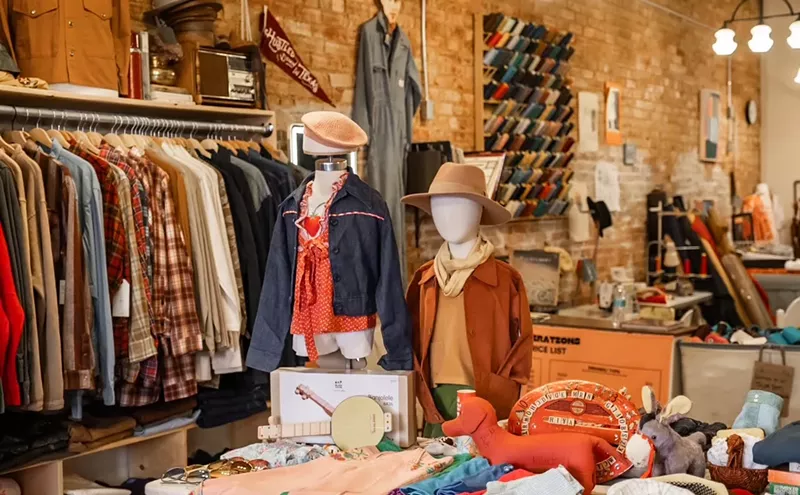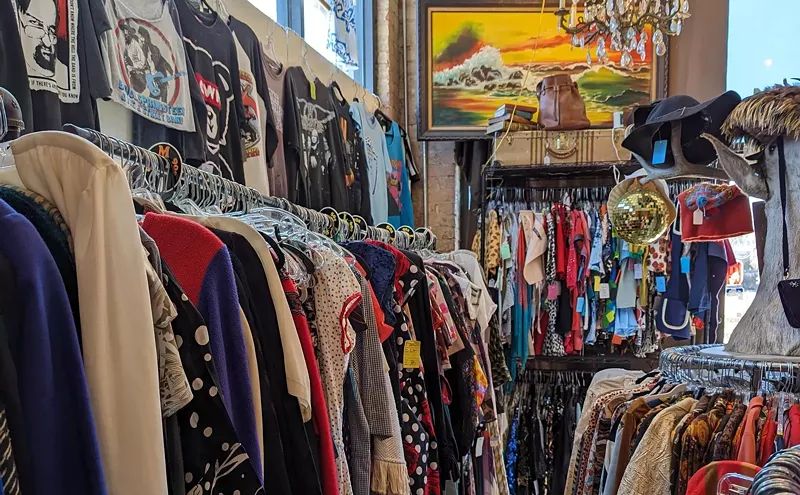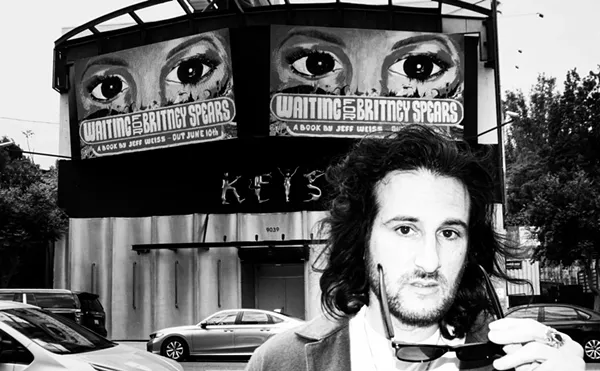It's ancient Turkish rugs handwoven by two old ladies in Hereke, or Flemish tapestries keeping drafts out of the castle while simultaneously recalling the Battle of Hastings. It's also early Americana: a wedding ring bedspread passed down through generations.
It is usually women's work, functional before it is decorative. And it's viewed as craft--rather than fine art.
Sue Benner wants to change that.
Combining childhood sewing skills with years spent studying the shape of the carotid artery, Benner hopes to elevate textile creation to art.
Raised in Oshkosh, Wisconsin, Benner, a molecular biology major as an undergraduate, earned a master of arts degree in biomedical illustration from the Southwestern Graduate School of Biomedical Sciences in Dallas.
Now 40 and living in Dallas, she began making quilts in 1977, as part of her undergraduate honors thesis, designing cellular and tissue structures on hand-dyed cotton and silk. Her graduate studies later led her to complete a series of 10 biomedical quilts--and her first professional exhibition as an artist, at Southwestern Medical School.
The Whitney Museum in New York had just launched a groundbreaking exhibition titled "Abstract Design in American Quilts," focusing on the aesthetic, rather than historic, value of quilts. The exhibit traveled nationally and internationally for four years, elevating the notion of quilt work's artistic value. "At the time, I had no idea that my work would fit into the growing medium of contemporary studio-art quilts," Benner says.
She sold those early quilts to doctors and other hospital staff for a few hundred dollars. Today, Benner's art quilts sell for several thousand dollars and hang in museums, galleries, and public spaces around the country.
Benner was a talented medical illustrator--a precise drawing of the female reproductive system is propped against the wall of her studio. "I would take any assignment or commission to pay my bills," she says.
But she continued to experiment with what she then called "painted fabric constructions." In 1982, she was finally able to abandon medical illustration altogether to concentrate on her fabric creations.
Benner and local fashion designer Sara Crittendon opened a studio in Deep Ellum. "Sara would design the clothes, and I would do some painted fabrics for her, plus my own silk paintings and some quilting," says Benner.
Calling on architects, interior designers, and art consultants to offer her work for sale, she discovered other artists around the country creating contemporary quilts totally divorced from the items' utilitarian history.
These new works weren't for the bed, but for the wall, and they mirrored the developments which had occurred in modern art during the past 150 years: impressionism, cubism, abstract expressionism. She sold her work in craft and contemporary art galleries.
In 1985, while visiting the Dallas Museum of Art, Benner viewed two raffia skirts made by the Kuba people of Zaire. The tribal pattern inspired her to create a series of works using hand-dyed and commercial silk--work exploding with vivid purples, vermilion, and brown beneath a pattern of black abstract appliques.
"In 1990, I decided that I was ready to change the focus of my work. I was getting burned out on large-scale commissions. My husband and I wanted to start a family."
She eventually exhibited Tribute: Kuba Skirt Series II at the 1993 Quilt National Show, a juried exhibition of art quilts in Athens, Ohio. The biennial Quilt National Show attracts thousands of slides from artistic quilters around the world. Based on the slides, jurors select fewer than a hundred works for the show and subsequent traveling exhibition.
Two years later, the show accepted another of Benner's works, a two-part construction called Sink or Swim #21 and #22. "Two ideas came together at the inception of the Sink or Swim series," she says. "I had recently given birth to my first son and found myself alternately floating and sinking in a sea of motherhood. Also, my dye-painted silks began to remind me of underwater environments. Later in the series, as I gained confidence, I added elements of tropical fish. After the birth of my second son, I am still swimming."
With two preschoolers at home, she now struggles to find time to work. "I get up around 5:45 in the morning, exercise, then get the kids ready for their day. I get to the studio between 9:30 and 10 in the morning and then I work until 1:30 in the afternoon.
"When I had longer days, I would divide up my time between paperwork and the sewing machine or mixing colors. Now my day is so short that I try to accomplish one thing at a time."
Benner mixes her dyes and chemicals four times a year. While exploring her spacious studio, I notice numerous strips of multicolored silk and cotton hanging in the window. "I'm checking to see how they react to sunlight," she explains.
She usually works on five to 10 pieces at a time, all in different stages of development. "If I get stuck on one piece, I move to another one." An average piece takes three to six months, with each quilt requiring anywhere between 50 and 100 hours of labor.
The Dallas Arboretum, near her studio, inspired one project. Every spring, the Arboretum hosts a colorful garden event called "Dallas Blooms." This year, Benner became enamored with the color combinations of pansies and tulips. The result was an explosion of lustrous violets and yellows on several varieties of silk, which draw the viewer into the middle of a flower bed surrounded by pools of green grass.
Inspiration mingled with commerce when Virginia art consultant Monica Lesko, who'd seen Benner's work in a magazine, invited her to create six quilts for the lobby of the Fairfax Hospital in Fairfax, Virginia. "Fairfax Hospital had a very large lobby which they wanted to make more intimate and less threatening," Lesko says. "Sue's work looks like fine art, but it's more welcoming."
Benner quickly realized that her garden patterns would be perfect. "What could be more soothing than a walk through colorful gardens while waiting in the lobby of a hospital?" she asks. The only color guideline she was given was, "please, no blood red," she says.
After hurried calls to her silk sources and dye suppliers, Benner dove into her Arboretum Series, developing two groupings of three quilts each to create a spring landscape.
Hospital studies have shown that surgery patients recovering in rooms with attractive window views or other pleasant physical surroundings have shorter post-operative stays, fewer complications, a more positive attitude toward recovery, and require less pain medication than patients who look at blank walls. Benner's lobby landscape, which is mounted at a level where it can be touched as well as viewed, extends the cheering effects of art to hospital employees as well.
Perhaps because we think of quilts as (literally) warm and inviting, studio quilts are more accessible than other forms of art. Yet they still have a long way to go in terms of being viewed as serious art. Among traditional craft media--wood, metal, fiber, glass, and clay--fiber lags behind the others in both public acceptance and collection.
In 1993, Sotheby's, the New York auction house, held its first annual sale of craft media. The highest prices went to furniture and glass makers. Only one fiber piece sold.
Full Deck Art Quilts, a traveling Smithsonian exhibit of 54 quilts depicting a deck of cards and two jokers, has helped. When it opened at the Smithsonian's Renwick Gallery in March, it drew 22,000 people during a six-week run.
Yvonne Porcella, president of Studio Art Quilt Associates, the 15-year-old umbrella organization for studio quilt artists, says the group has about 450 national and international members. "I'm aware of only three active contemporary art quilt collectors in this country," she says. "Because I believe in putting my money where my mouth is, I've purchased 11 quilts myself in recent years. But there just aren't very many national or international juried shows where artists can show their work."
Sue Benner, meanwhile, has six current works in progress, is making notes for a book about the process of her art, and volunteering her time and expertise to the DMA's "Go Van Gogh" program, which offers art instruction in area schools.
She's looking forward to being able to travel, to explore the historical frontiers of her newfound ancient craft. "I want to go everywhere," she says, "and see the textiles of the world.












